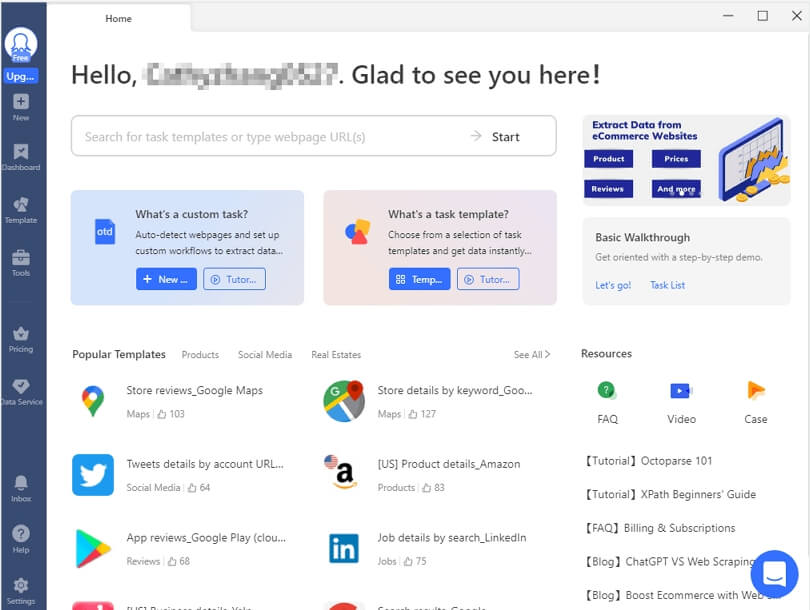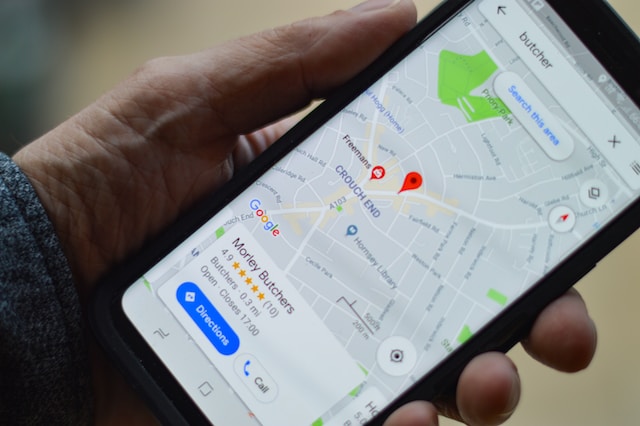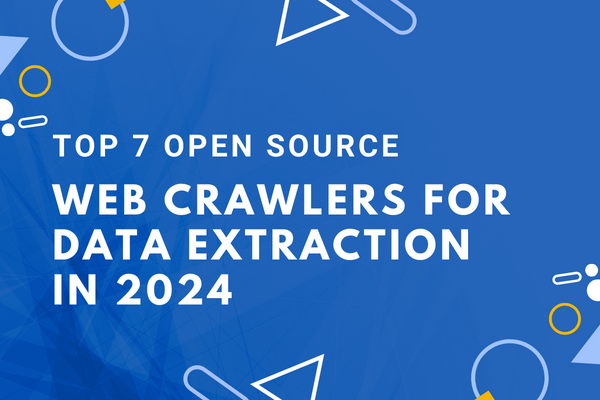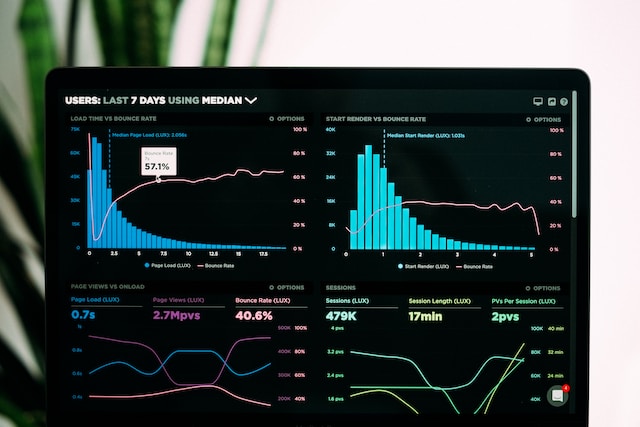It’s not easy for non-programmers to gather lots of unstructured data from the web by manually copying and pasting. However, data is important for marketing analysis, academic research, or any other industry. If you’re in a similar situation, then web scraping is helpful.
There may be a misunderstanding that building a web crawler asks for coding skills. Actually, there are many free web crawlers designed for non-coding users now. You can easily scrape data from any website. Keep reading to learn about the top 9 free web scrapers.
Why Do You Need a Web Crawler
With automated web crawling tools, crawling for web data (web scraping, data harvesting, or data extraction) is no longer the only privilege for programmers. Pick a free web crawler to start, you can:
- Get the needed data with no need to copy and paste.
- Export your data well-organized in different formats such as Excel, and CSV.
- Save a lot of time and effort thereafter.
How to Choose a Free Site Crawler
You may have a similar question: Is there a real free web crawler? The answer is YES. Besides the easy-to-use quality, what you should take into account when you are choosing a free web crawler:
Scalability/limit of use
What data are you looking for and how much are you aiming to scrape? If you want to start from a free web crawler and at the same time meet your need for data extraction, you should pay attention to how scalable the tool is and whether is there any limit of use for a free plan.
Data quality
In most cases, data is not the end. What people expect from data is to generate ideas and insights or to guide their decision-making process. However, raw data from the web may not apply to analysis right away. What you have to do is to clean the data so that the computer can understand and help analyze it. To make this easier, you can choose a web crawler integrated with data cleaning features to free you from repetitive manual jobs.
Customer service
Even though automated web crawling tools have simplified much of the web scraping process for beginners, users could still encounter unexpected problems. Web crawling tools are not omnipotent because of the existing challenges in web scraping. With support from your side, you can have a smooth start and go further.
Top 9 Free Web Crawlers in 2025
1. Octoparse
Octoparse is a free web crawler built for non-coders. It has the AI-based auto-detecting function to help you gather web data into structured Excel, Google Sheets, or CSV files almost automatically. What you need to do is ente the target URLs and follow the tips it gives with simple clicks.
Turn website data into structured Excel, CSV, Google Sheets, and your database directly.
Scrape data easily with auto-detecting functions, no coding skills are required.
Preset scraping templates for hot websites to get data in clicks.
Never get blocked with IP proxies and advanced API.
Cloud service to schedule data scraping at any time you want.
A much easier way for non-coders is using Octoparse online scraping templates. These preset data templates are designed for popular websites like Amazon, eBay, TikTok, X, etc. With them, users only need to enter a few keywords and then wait for the results. It can be used from a browser, and you don’t need to download anything.
https://www.octoparse.com/template/contact-details-scraper
What’s more, Octoparse also provides advanced functions like IP proxy, CAPTCHA solving, cloud scraping, etc. to help you customize the crawler. Don’t worry, Octoparse help center and live chat customer service will support you all the time.
Pros:
- User-friendly interface and easy to use.
- Supports visual scraping for non-technical users.
- Enables remote access and processing of data.
- Allows for automation of scraping tasks and workflows.
- Support advanced scraping functions.
- Responsive customer support services.
Cons:
- Some complexity in setting up advanced scraping tasks.
2. 80legs
80legs is a JavaScript-based application that offers a custom web crawling service for users to configure their crawler and scrape from public web pages. As the crawling task is completed, users can download the data to their computers.
Free plan users can run concurrently one crawl at a time and scrape from 10,000 URLs per crawl. No clear customer service and support access are shown on the site.
Pros:
- Capable of handling large-scale scraping tasks.
- Offers extensive customization options for scraping tasks.
- Utilizes parallel processing for efficient data extraction.
- Provides API access for integration with other tools.
Cons:
- Setting up and utilizing its features may require a learning curve.
- Pricing may be a consideration for users in paid plan.
- Relies on 80legs’ infrastructure and services.
- Limited support options for troubleshooting and guidance.
3. WebHarvy
WebHarvy is a point-and-click web scraping software. You can use WebHarvy to scrape web data including texts, images, URLs, and email information, and save the data to your computer. It also provides a built-in scheduler and proxy support to avoid being banned because of frequent visits.
WebHarvy offers new users a free evaluation version for 15 days and under the evaluation period you can scrape 2 pages of data from websites.
There are a series of tutorials in both text and video versions on the WebHarvy home page, and you can find support for technical assistance.
Pros:
- Easy to use with point and click interface.
- Support advanced data extraction techniques.
- Can handle large-scale scraping tasks.
- Responsive support services available for users.
Cons:
- Pricing structure may not be affordable for all users.
- Some limitations in automation features.
- Relies on WebHarvy’s infrastructure and updates.
- Limited flexibility in customizing certain scraping tasks.
4. ScrapeStorm
ScrapeStorm is a client-based visual web scraping tool. Like Octoparse’s auto-detection, ScrapeStorm can intelligently identify the content and paging for easy crawler configuration. The scraped data can be exported in multiple formats, including Excel, CSV, TXT, HTML, MySQL, MongoDB, SQL Server, etc.
You can scrape unlimited pages per task and export 100 rows of data per day for a free plan. Its document center offers tutorials and you can also watch YouTube videos from its website.
Pros:
- User-friendly Interface.
- Support cloud-based data processing and storage.
- Allows for automation of scraping tasks.
- Maintains features in line with changing web structures.
Cons:
- Costs may be prohibitive for some users.
- Some complexity in mastering advanced features.
- Restrictions in customizing certain aspects.
- Limited support options for troubleshooting and guidance.
5. Parsehub
Parsehub is a desktop application for web crawling, in which users can scrape from interactive pages. Using Parsehub, you can download the extracted data in Excel and JSON and import your results into Google Sheets and Tableau.
A free plan can build 5 crawlers and scrape from 200 pages per run. There is a 14-day data retention for your scraped data, so do remember to back up. Text and video tutorials are both available.
Pros:
- Intuitive interface for easy data extraction.
- Supports visual scraping for non-technical users.
- Allows for remote access and processing of data.
Cons:
- Some complexity in setting up advanced scraping tasks.
- Pricing structure may not be feasible for all users.
- Relies on ParseHub’s infrastructure and services.
- Limited flexibility in customizing certain features.
6. Dexi.io
Dexi.io is a cloud-based web crawling tool and there are four types of robots you can choose from, including Extractor, Crawler, Pipes, and ButoBot.
The tool itself can be highly functional, while no automation framework is available for new starters to pick up quickly. If you have experience in web scraping, you can have a try.
Pros:
- User-Friendly Interface.
- Allows for remote access and processing of data.
- Supports data transformation and integration functionalities.
- Enables automation of scraping tasks and workflows.
- Offers pre-built robots for various scraping needs.
Cons:
- Pricing structure may not be suitable for all users.
- Some tasks may require a learning curve to set up.
- Relies on Dexi.io’s infrastructure and services.
- Limited flexibility in customizing certain features.
- Limited support options for resolving issues and queries.
7. Web Scraper Chrome Extension
Web Scraper is an extension tool with a point-and-click interface integrated with the developer tool. You have to build your crawler by selecting the listing information you want on the web page.
In a paid plan, Web Scraper is equipped with functions such as cloud extraction, scheduled scraping, IP rotation, and API access. Thus, it is capable of more frequent scraping and scraping of a larger volume of information.
Pros:
- User-friendly Interface without coding.
- Allows customizing data extraction.
- Advanced features: Cloud extraction, scheduled scraping, IP rotation.
- Handles larger data volumes efficiently.
- API access for seamless data use.
Cons:
- Advanced features in paid plan.
- Works only with Google Chrome.
- Some complexity in setting up tasks.
- Adjustments needed for site updates.
- Potential issues with data scraping legality.
8. OutWit Hub Light
OutWit Hub Light is a user-friendly web scraping tool that simplifies data extraction tasks. With its intuitive interface, users can easily collect and organize information from websites without the need for complex coding. OutWit Hub Light streamlines the process of gathering data, making it a valuable tool for individuals and businesses looking to extract valuable insights from the web efficiently.
You can download OutWit Hub Light for free from its official website. It integrates dozens of data extraction features to simplify data searching on websites, including the collection of documents, images, etc.
Pros:
- Intuitive interface.
- Extracting various types of data from websites.
- Simplifies the scraping process for non-technical users.
- Basic functionalities accessible without cost.
Cons:
- Free version may lack advanced functionalities.
- Not be as efficient for large-scale scraping tasks.
- Limited support options for troubleshooting.
- Struggle with highly complex website structures.
9. Apify
As a web scraping platform for developers, Apify also has a sector where many pre-built scrapers are available. These scrapers don’t require any programming knowledge. All you need to do is to input a few keywords and then tone the setting. After that, you can run the Actor to get your structured dataset.
Pros:
- Capable of handling large-scale scraping tasks.
- Allows for remote processing and storage of data.
- Supports automation of scraping and data extraction processes.
- Offers a range of pre-built tools for various scraping needs.
- Provides monitoring functionalities for scraping tasks.
Cons:
- Pricing may be a consideration for users with budget constraints.
- Some complexity in setting up and utilizing its features.
- Reliance on Apify’s infrastructure and services.
- Limited flexibility in customizing certain features.
- Limited support options for troubleshooting and guidance.
Final Thoughts
After learning these easy-to-use web crawlers, you can choose the one that most suitable for your needs. Octoparse is always the best choice for you if you’re looking for a free and no-coding skills web crawler. Try these free web crawlers to improve your data analysis in your business.





